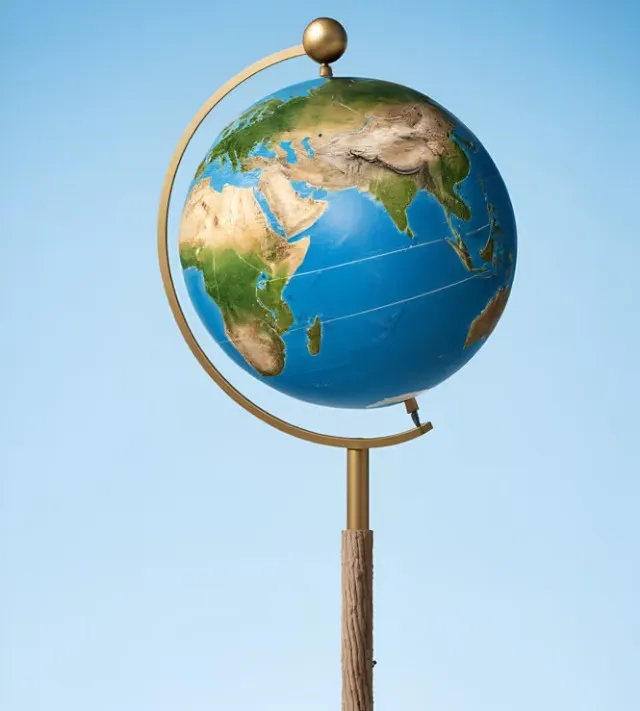Scientists have discovered that Earth has tilted 31.5 inches and believe a single factor is responsible for this shift.
Recent research has revealed that the Earth has tilted by 31.5 inches over the past two decades.
This surprising shift is linked to one major factor: the pumping of groundwater.
Scientists have studied the phenomenon and found key details about Earth’s tilt and its impact on life.

Understanding Earth’s tilt reveals its impact on various systems.
The Earth’s rotational pole is not fixed; it changes position over time.
This movement is normal, but the recent tilt has raised eyebrows among scientists.
Ki-Weon Seo, a geophysicist who led the study, explained that the pole shifts regularly.
However, the recent changes are more pronounced due to specific human activities.
The study, published in the journal “Geophysical Research Letters“, analyzed data from 1993 to 2010.

During this period, researchers found that the extraction of groundwater has had a significant effect on the Earth’s tilt.
In total, about 2,150 gigatons of groundwater were removed, and this has led to a noticeable shift in the planet’s axis.
“I’m very glad to find the unexplained cause of the rotation pole drift,” Seo added.
“On the other hand, as a resident of Earth and a father, I’m concerned and surprised to see that pumping groundwater is another source of sea-level rise.”
The role of groundwater
Groundwater is the water that exists below the Earth’s surface.
It is stored in aquifers, which are layers of rock that can hold water.
This water comes from rain and other surface sources that filter down into the ground.
People often pump groundwater for various reasons, including drinking water, irrigation, and industrial use.

Seo noted that the redistribution of this groundwater is the primary reason for the tilt.
As water is pumped out from the ground, it eventually makes its way to the oceans, which contributes to rising sea levels.
The connection between groundwater pumping and sea-level rise is increasingly important for understanding climate change.
The tilt affects sea levels, leading to significant changes.
The study found that the tilt of the Earth corresponds to a rise in sea levels.
Specifically, the 31.5 inches of tilt is associated with a 0.24-inch increase in sea level.
Minor sea level changes can significantly impact coastal communities and ecosystems.
When people remove groundwater from aquifers, it can cause land subsidence, making the ground sink.

This, combined with rising sea levels, poses risks to many regions around the world, especially those that are already vulnerable to flooding.
“Observing changes in Earth’s rotational pole is useful for understanding continent-scale water storage variations,” Seo added.
Global concerns arise from the Earth’s shifting tilt effects.
Certain areas are more affected by groundwater pumping than others.
Regions like North America and northwestern India are particularly at risk.
In these places, excessive groundwater extraction can lead to serious environmental issues.
Scientists are concerned that if this practice continues, it could exacerbate the challenges posed by climate change.

Surendra Adhikari indicated the impact of groundwater pumping on Earth’s rotation.
He stated that the findings from the recent study highlight the need for better management of water resources.
Scientists urge immediate action to address Earth’s changing tilt and rising sea levels.
Groundwater’s impact on Earth’s tilt and sea levels requires action from policymakers and communities.
Sustainable water management practices are essential to protect both our environment and future generations.
Seo expressed his hope that this research will help researchers and governments address the causes of sea-level rise.
Understanding human impact on the planet helps create effective solutions.